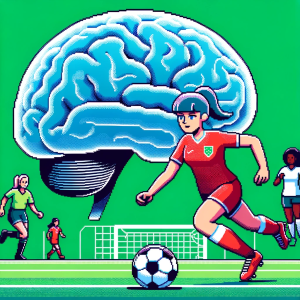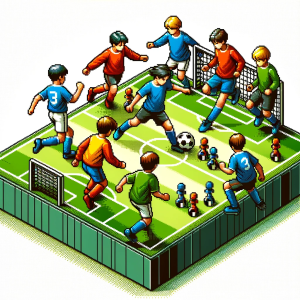
Mastering the Goalkeeper Position: Insights from Two Seasons of Research
Goalkeepers are often the unsung heroes, yet their unique demands and contributions to the game are frequently overlooked. Recent research analyzing two seasons of data from youth goalkeepers in Spain’s top-tier soccer league sheds light on the physical and technical challenges they face.
Goalkeepers: A Unique Role in Soccer
Unlike outfield players, goalkeepers (GKs) operate in a world of split-second decisions, explosive actions, and pinpoint accuracy. While outfield players often measure success in miles covered, goalkeepers excel in metrics like dives, jumps, and high-intensity accelerations. For coaches, understanding these distinct physical demands is crucial for designing effective training sessions that replicate game-day intensity.
Key Findings from the Research
The study focused on six youth goalkeepers from Spain’s Real Madrid academy over two full seasons, comparing training and competition data. Using advanced tracking technologies, researchers quantified external load (EL) variables like dives, jumps, and high metabolic load distance (HMLD). Here are the main takeaways:
- Differences by Context: Goalkeepers covered more total distance during matches but performed more dives and saves in training, highlighting the need for context-specific preparation.
- Differences by Category: Youth B goalkeepers demonstrated higher agility and technical performance (e.g., quicker time to feet), while Youth C goalkeepers faced greater overall physical demands.
Practical Applications for Coaches
To translate these findings into real-world strategies, here are some tailored recommendations:
1. Individualize Training Based on Age and Ability
The study emphasized the importance of tailoring training to each goalkeeper’s developmental stage. For Youth C players, focus on building endurance and strength to handle higher physical demands. For Youth B players, refine agility and technical precision to optimize performance during high-pressure moments.
2. Replicate Match Scenarios in Training
Training sessions should mirror the intensity and unpredictability of matches. Incorporate drills like penalty saves, corner kick defense, and fast-break scenarios to prepare goalkeepers for real-game challenges.
3. Monitor and Manage Workload
Overtraining increases injury risk, especially with high-intensity movements like dives and accelerations. Use wearable tech or simple tracking methods to monitor metrics like total dives, jumps, and distance covered. Adjust workloads to allow for recovery, particularly during back-to-back games.
4. Focus on Explosiveness and Recovery
Goalkeepers thrive on explosive movements. Incorporate plyometric exercises like box jumps and lateral bounds to enhance their ability to make quick, powerful actions. Pair these with recovery-focused drills, such as light jogging and flexibility exercises, to prevent overuse injuries.
5. Develop Mental Resilience
A goalkeeper’s role is as much mental as physical. Introduce mindfulness training and decision-making exercises to help goalkeepers stay focused and confident under pressure.
Broader Implications for the Soccer Community
This research underscores the evolving role of the goalkeeper as both a defensive stalwart and an offensive initiator. Modern goalkeepers are expected to perform high-stakes saves while also contributing to the team’s attacking strategies. Clubs and academies must invest in position-specific training and resources to meet these demands.
Additionally, the findings highlight the value of data-driven approaches in soccer. By analyzing metrics like HMLD and high metabolic power efforts (HMPE), coaches can make informed decisions about training loads and player readiness.
Your Turn to Kick It Off
How do you currently train your goalkeepers? Are you incorporating game-specific scenarios or tracking their workload? Share your thoughts in the comments or join the discussion on social media.
Here are some questions to get you started:
- How might you apply these findings to your goalkeeper training sessions?
- What strategies do you use to balance intensity and recovery for your goalkeepers?
- How do you approach mental training for players in high-pressure roles?
By sharing ideas and experiences, we can all contribute to advancing the art and science of soccer coaching. Let’s keep the conversation going!
With actionable insights from research and a community of dedicated soccer professionals, you’re equipped to help your goalkeepers reach new heights. Dive into the data, tailor your training, and watch your players thrive both on and off the field.



